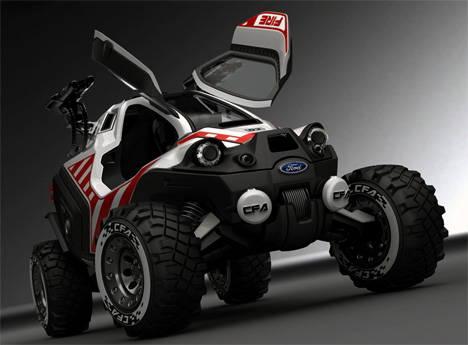The Future of Free Maintenance Programs
Since March of 2010, Toyota dealers have offered ToyotaCare®, a 2 year 25k mile complimentary maintenance program, on all new vehicles. In October 2010, Toyota decided to make the 2 years 25k miles maintenance program permanent. While some people have been critical of the value of this “free” maintenance – it can work out to as little as 2 free oil changes and 2 free tire rotations – there’s definitely something nice about free maintenance…even if Toyota isn’t offering much of it.

In the future, you can expect this program to become much more common AND increase in length – here’s why:
1. Dealers love them. Dealers need every opportunity to ‘capture’ new vehicle buyers and turn them into regular service customers. Many studies show that dealers are much more likely to obtain a lifetime customer if they can get them to come in for 3 consecutive oil changes. Since Toyota’s program is offering new owners anywhere from 5 free oil changes (one every 5k miles) to 2 free oil changes (one every 10k miles), that’s a huge step towards grabbing a new service customer.
2. Consumers expect them. According to the dealership service pros I talk to, consumers have come to expect maintenance-free vehicles now more than ever. Since many consumers don’t do their own maintenance – and don’t understand what it is or why it’s really important – they view maintenance as a real burden. Making it free reduces the perceived burden accordingly.
3. They improve brand loyalty. The trend in vehicle service over the last 30 years has been really troubling for auto manufacturers:
- Consumer buys new car
- Consumer decides not to service new car at dealership to save both time and money
- Accordingly, consumer has no relationship with the dealership that sold them their car
- Because consumer isn’t visiting dealership every 60-90 days, they’re not seeing the manufacturer’s new products
- When the consumer gets ready to buy another new vehicle, they’re less likely to return to the same dealer and buy the same product
By offering free maintenance, manufacturers increase the chance that dealers can ‘capture’ a customer and grow a repeat new-car customer.
4. They’re relatively cheap. Toyota and other manufacturers are reducing the frequency of oil changes by going with fully synthetic oil that only needs changed every 10k miles. The longer interval makes these free maintenance programs less expensive from the manufacturer’s perspective…we can expect to see the length of free maintenance match the length of the factory bumper-to-bumper warranty soon.
5. They facilitate leasing. Consumers often choose to lease a new vehicle because they’re significantly cheaper than buying (at least in the short run). Businesses often choose leasing because they need to write-off a vehicle expense as transparently as possible. Both businesses and consumers who lease like the idea of no additional costs beyond their payment.’
6. Toyota isn’t the first to offer them. Free maintenance programs have been around for a while, but Toyota was the first “non luxury” manufacturer to make them standard. Luxury car companies have been enjoying the benefits of these programs for years…Toyota is just following what already works at Lexus.
Chrysler-Fiat has recently moved to match Toyota’s free maintenance program by offering a 3 year 36k mile on two top-end Dodge models. Assuming Dodge buyers and Dodge dealers like the program as much as Toyota dealers, you can expect to see maintenance programs on all Chrysler-Fiat vehicles at some point…with the rest of the industry following.
Tundra VSC Shut Off Instructions
Toyota’s Vehicle Stability Control (VSC) is an arguably useful and somewhat complicated feature on the Toyota Tundra. Useful in that it can be a big help negotiating snowy or rain-slicked roads, and complicated thanks to Toyota changing the functionality of the VSC Off switch from one year to the next – not to mention the differences it offers when comparing two-wheel and four-wheel drive operating modes. Read more…
Amatoya: Futuristic Firefighting Vehicle
Most of us grew up with fire trucks that were big, red, and noisy, designed to carry as much water, supplies and men as possible to the scene of a blaze while clearing a path along crowded city streets or twisting rural roads. The future of firefighting equipment, however, might look quite different if Liam Ferguson has his way. The designer has put together an entirely new type of firefighting vehicle called the Amatoya that is more adaptable to a wider range of situations than traditional truck-based apparatus.
The inspiration for the Amatoya came from the “Black Saturday” wild fires that swept across Victoria, Australia in 2009. Read more…
Top 10 Toyota Stories of 2010
Has there been a more important year in Toyota’s U.S. history than 2010? Toyota experienced a once-in-a-lifetime scandal, took an unprecedented action and stopped building or selling key models for 10 days, became the target of a $10 billion dollar lawsuit, and yet somehow managed to increase truck sales 15% in 2010 compared to 2009.
Has 2010 been a good year for Toyota? No. But it hasn’t been bad…at least not as bad as some people projected. Toyota’s culture seems to be undergoing a change, and consumers are slowly but surely warming back up to Toyota.
Here are the top 10 Toyota stories of the past year: Read more…
TCI Universal Illuminated Burnout Kit
V8-powered pickup trucks are the perfect burnout machines thanks to the combination of a light rear matched with gobs of low-end torque. Almost everyone has at one time or another at least spun the tires on their truck, and some take things even further by staging full-on brake-assisted burnouts, whether in a high school parking lot, at the drag strip just before a run or in front of their own house in a fit of adolescent nostalgia.

TCI has come up with perhaps the ultimate burnout accessory, suitable for installation in any rear-wheel drive automobile – including pickup trucks. As though burnouts didn’t already attract enough attention Read more…


